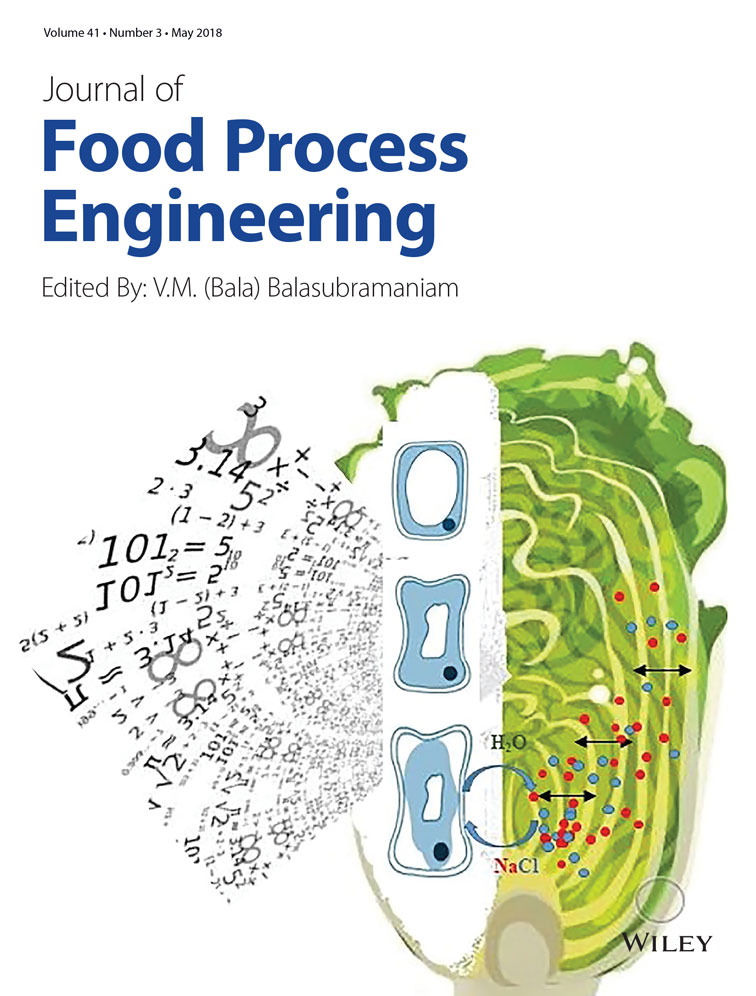Biofilm formation of Enterococcus faecium on stainless steel surfaces: Modeling and control by disinfection agents
Funding information: Conselho Nacional de Desenvolvimento Científico e Tecnológico (CNPq)
Abstract
The objective of this study was to evaluate the biofilm formation by Enterococcus faecium, isolated from coalho cheese, on stainless steel and its control by disinfection agents. The biofilms formation on stainless steel 304#4 was modeled as a function of time (0, 1.2, 4, 6.8, and 8 days) and temperature (4.5, 10.5, 25.0, 39.5, and 45.5 °C) using response surface methodology. Analysis of variance revealed a significant (p < .05) fit of the model, allowing to build a mathematical model capable of predicting adhesion as a function of time and temperature. Optimum time–temperature combinations for biofilm formation were found to involve contact times from 3 to 7.5 days and temperatures between 22 and 43 °C (counts > 5 log cfu/cm2). E. faecium was not eliminated by the sodium hypochlorite at 100 mg/L and peracetic acid at 300 mg/L demonstrating the difficulty of disinfection stainless steel surfaces after the onset of biofilm formation.
Practical applications
In the present study it was defined, through mathematical modeling, the optimal combination of time and temperature of E. faecium biofilm formation isolated from coalho cheese. These results can be used to elucidate the biofilm formation process of this microorganism under conditions of time and temperature normally used in food industry. In addition, the understanding of this behavior helps to improve the procedures of cleaning and disinfection of equipment and utensils in food industry. The present study also showed that the main disinfectants used in the food industry were not efficient in the elimination of formed biofilms.




